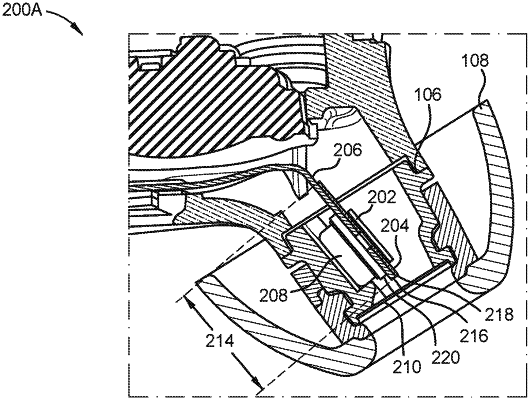| CPC H05K 9/0067 (2013.01) [H04R 1/04 (2013.01); H04R 1/1016 (2013.01); H05K 1/189 (2013.01)] | 11 Claims |

|
1. An in-ear audio output device, comprising:
an earbud housing;
a nozzle coupled to an external surface of the earbud housing and configured to extend towards an ear canal of an ear of a wearer of the in-ear audio output device and comprising a planar, distal end having one or more apertures to conduct sound waves to the ear canal of the wearer;
a flexible printed circuit board positioned within the earbud housing and the nozzle, the flexible printed circuit board comprising:
a first portion;
a second portion comprising a first edge of the flexible printed circuit board proximate the one or more apertures;
a metal layer on a top surface of the second portion extending, at least, to the first edge of the flexible printed circuit board; and
a first coverlay on a top surface of a portion of the metal layer of the flexible printed circuit board, the first coverlay comprising a second edge proximate the one or more apertures, wherein the second edge is a greater distance away from the one or more apertures than the first edge; and
a microphone surrounded by a metal casting attached to a bottom surface of the flexible printed circuit board, the metal casing comprising a third edge proximate the one or more apertures, wherein the third edge is a greater distance from the one or more apertures than the first edge.
|